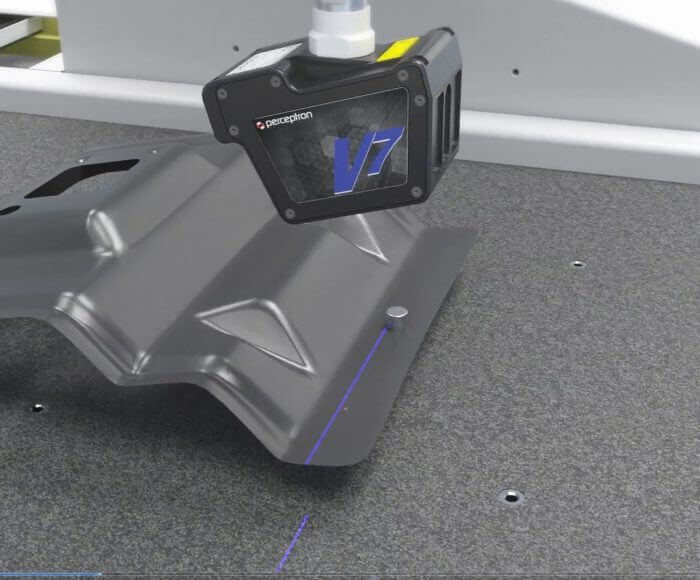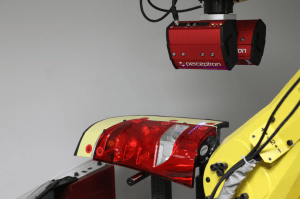Perceptron (NASDAQ:PRCP) was founded in 1981 by graduates of The General Motors Institute (formerly GMI and now Kettering University). Working closely with the automotive industry, they analyzed and understood the damaging effects of process variation on complex product assembly operations and concluded that “a process which cannot be measured can never be effectively controlled or optimized.” Through revolutionary machine vision and pioneering engineering efforts, they created a unique and innovative measurement solution that not only allowed fast and efficient containment of quality problems as they occurred, but also provided the ability to proactively seek-out and reduce process variation. The result was groundbreaking – a 100%-dimensional measurement solution capable of being deployed in various manufacturing environments. They have continued to leverage industry expertise, global infrastructure, and comprehensive range of solutions to further penetrate the automotive, manufacturing, appliance, aerospace, and heavy machinery markets. Headquartered in Plymouth, Michigan, USA, Perceptron has subsidiary operations in Brazil, China, Czech Republic, France, Germany, India, Italy, Japan, Singapore, Slovakia, Spain and the United Kingdom. Today we will do a brief look at their company as well as their metrology technology.
Perceptron creates products based on an organization’s needs. Products of theirs include 3D machine vision solutions, robot guidance, coordinate measuring machines, laser scanning and advanced analysis software. Global automotive, aerospace and other manufacturing companies rely on Perceptron’s metrology solutions to assist in managing their complex manufacturing processes to improve quality, shorten product launch times and reduce costs. The customers of theirs include Nissan, Masserati, Whirlpool, Jeep, Land Rover, GM, Audi, Magna, Maserati, Mercedes Benz, Volkswagen, BMW, Ferrari, Chrysler, Jaguar, Ford, Hyundai, Lamborghini, and SEAT. They create non-contact sensors that use a high resolution camera and various laser colors to achieve reliable measurement on bare and painted metal, chrome, translucent materials, carbon fiber, and other materials at full production speed. All sensors are also calibrated and rectified at Perceptron’s headquarters and ship ready to measure.
Some of their main products in terms of laser scanning and 3D metrology include the following:
- Helix – evo
- Helix – solo
- V7
The Helix- evo is a 3D scanning sensor that is optimized for in-line measurement. It does best in a manufacturing or on a plant floor.
Whereas the evo is meant to measure many measurements of a workpiece the Helix-solo only contour measures one.

The V7 is a device that integrates with other CMM machines. This 3D scanning tool enables reverse engineering, point cloud-to-CAD comparison, 3D visualization and inspection applications.
A key difference between Perceptron and other organizations previously analyzed within this metrology series is the fact that they are currently traded publicly as a company on the NYSE. The current stock price as I write this article for Perceptron (PRCP) is $4.39. I am not traditionally trained in analyzing companies and their SEC filing info, but for those who are inclined, I have attached the link to Perceptron’s filing here.
It is apparent that the majority of their sales seem to come from their general measurement solutions. The company is based on standard metrology, but 3D scanning solutions are not as large in terms of sales just yet. It is still a large amount of sales, but it is far away from being the main focus of this organization. This also may point towards the fact that 3D scanning is still in its infancy in some sense. Again, I am not a qualified financial expert, just giving an opinion based on my background. Would love to talk to someone with more knowledge.
This concludes my basic analysis of Perceptron as an organization. After doing this, there are still a ton of questions and follow ups I will be doing. I am excited to be understanding the market of 3D scanning a bit more as this will be connected to the 3D printing field for a large amount of time.
Subscribe to Our Email Newsletter
Stay up-to-date on all the latest news from the 3D printing industry and receive information and offers from third party vendors.
You May Also Like
3D Printing Unpeeled: New Arkema Material for HP, Saddle and Macro MEMS
A new Arkema material for MJF is said to reduce costs per part by up to 25% and have an 85% reusability ratio. HP 3D HR PA 12 S has been...
3D Printing News Briefs, January 20, 2024: FDM, LPBF, Underwater 3D Printer, Racing, & More
We’re starting off with a process certification in today’s 3D Printing News Briefs, and then moving on to research about solute trapping, laser powder bed fusion, and then moving on...
3D Printing Webinar and Event Roundup: December 3, 2023
We’ve got plenty of events and webinars coming up for you this week! Quickparts is having a Manufacturing Roadshow, America Makes is holding a Member Town Hall, Stratafest makes two...
Formnext 2023 Day Three: Slam Dunk
I’m high—high on trade show. I’ve met numerous new faces and reconnected with old friends, creating an absolutely wonderful atmosphere. The excitement is palpable over several emerging developments. The high...


































